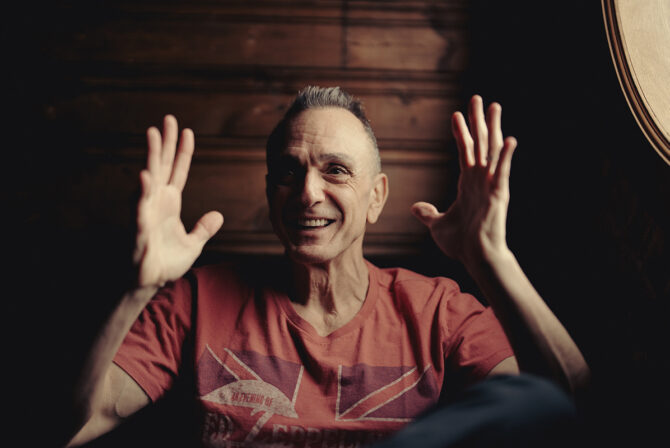My husband and I hosted the second night seder this year. Even though I don’t cook and can’t read the Hebrew in the Haggadah well enough to lead, I do know this: Seders should be fun and engaging for the kiddos, and we each need to see ourselves as though we were slaves in Egypt, journeying across a desert to freedom.
I found an idea online that would fulfill both of those mitzvot, and I set to work. It took multiple trips to my local crafting store (I know, I know, the sacrifices we Jewish mothers make for our children), spent far too much time watching YouTube videos on how to fold paper pyramids, and made several mildly frantic phone calls to local Judaica and general tchotchke shops looking for a Moses action figure, but it all came together in the end. (You can see the details of the last-minute Moses delivery over on my Instagram account.)
The girls and I were up early on Saturday morning, gathering cushions for each chair and searching the toy bin for wild beasts and Israelites. Once the table was set up with the pyramids of Egypt at one end and Moses leading his people to freedom on the other end, I sat back to admire our creation.
As I was looking at our motley crew of fleeing Israelites—Playmobil mothers pushing babies in small plastic strollers, a large plastic grandmother who bears an uncanny resemblance to Barbara Bush, a small rubber Princess Ariel figurine, a young boy wearing a tiny soccer jersey, a plastic police man and robber, and a duck, because of course, a duck—I realized something.
The mitzvah isn’t to get all tangled up in our modern day, self-inflicted Pharaohs; I’ve been doing that bit for years now. I’m highly skilled at digging around in the dusty recesses of my mind, dredging up all of the ways in which I get myself jammed up in the narrow straits of my own thoughts. I weigh too much. I’m not a good enough Jewish mother. I should have written another book by now. I should be craftier. I really need to learn to roast the damn chicken already. Blah blah blah.
No, the mitzvah is to see ourselves as if we were actually there, standing in front of a sea, wondering if old Moshe could actually part the damn thing or not, and what the hell we were supposed to do with ourselves once we got to the other side.
And so I thought about those Israelites. We throw that word around as if our ancestors were just one amorphous blob of Israelite, but they weren’t. They were individuals, and yes, they were slaves, but that doesn’t mean they were free from the intense feelings, social dynamics, and mental mayhem that most of us are all too familiar with. Along with their unleavened bread, I have to imagine they also carried broken hearts and petty crushes, intense love, deep yearnings, bitter grudges, power struggles, regrets, confusion, and fear, hope, and joy.
I thought about what it would be like to throw all of that on my back, leave the only home I had ever known, as shitty as it may have been, and wander into the desert FOR FORTY YEARS. My family can barely tolerate four hours on the New York State Thruway, and these poor souls spent a lifetime without a home. In addition to facing the physical challenges of a nomadic life in the desert, they were trying to establish themselves as a people, a community.
As I stood at the end of our table, surveying the tableau the girls and I had set up, I realized something I hadn’t ever articulated to myself before.
The journey to freedom was hard. Insanely hard. They didn’t have enough water. Each bite of food they ate was gritty with sand. THEY HAD TO POOP IN THE MIDDLE OF THE DESERT, PEOPLE. You think you’re having a hard time getting your baby to sleep in his super safe crib, with light-blocking shades and a white-noise machine? Not only did they not have any of that, they had snakes. And scorpions. Freaking scorpions.
No wonder they wished that they had just died in Egypt instead of being dragged into some God-forsaken desert where they had to eat matzah every day.
But it had to be that hard, because if they had just wandered onto the banks of the far side of the Red Sea and called an Uber to take them into the Holy Land, well, they would still be slaves at heart. As Rabbi Irwin Kula wrote:
“The true goal of the Exodus was to take Egypt out of the Israelites. The experience of the seemingly endless journey transformed a people—crushed, frightened, subservient and dependent—into a people with initiative, self-respect, anger at oppression and even militancy.”
This is a very different approach to transformation than the boot-camp, quick fix, top-10 list, Just Do It culture I was raised in. There’s a reason most self-help books don’t start with a disclaimer that says, “Well, this process is going to suck completely and it will take way longer than you had hoped and at some point you will probably rather die than stick with it, but I promise you will definitely drop at least 40 pounds and write a New York Times Bestseller by the end of it.”
Yeah. Not so much.
Here’s the thing: Many of us are fortunate enough to be free. We all want to feel free. Yet very few of us are willing to tolerate the discomfort of wandering around in the desert for any substantial amount of time in order to get there. But maybe, just maybe, it’s worth it.
Read More:
My Family Celebrates Both Passover And Easter. This Is How
Mayim Bialik: My Super Easy Moroccan Salad Recipe for Passover
That Time I Spent Passover in a Psychiatric Hospital








